In gardening and horticulture, Epsom salt or magnesium sulfate has long been touted as a supplement for enhancing crop nutrient uptake. It is extolled for its potential to improve seed germination; promote lush growth and enhance nutrient uptake but it may not be universally beneficial to every plant species. This means plants have different requirements for magnesium and sulfate, so Epsom salts can lead to negative consequences rather than benefits when used indiscriminately. This blog post aims to examine the intricate role played by Epsom salt in gardening, giving an elaborate analysis of its advantages, disadvantages as well as good application practices across different kinds of plants. By the end of this article, readers will know how and when to use Epsom salt effectively in order to ensure healthy growth of plants.
Understanding Epsom Salt and Its Components
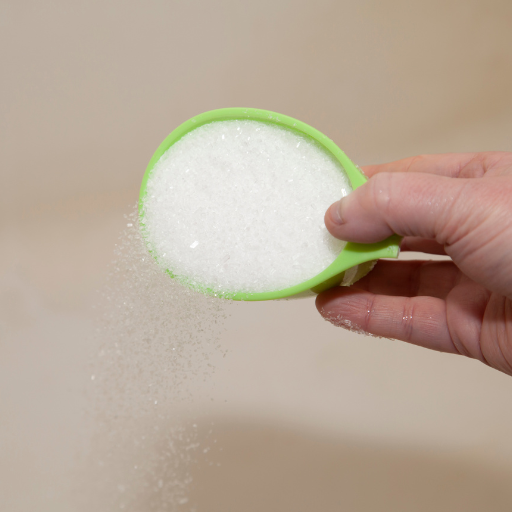
Epsom salt, with its two primary components—magnesium (Mg) and sulfate (SO₄)—plays a critical role in plant physiology.Magnesium is a primary macronutrient that is the central atom in the chlorophyll molecule that plays a key role in photosynthesis. Additionally, magnesium stimulates different enzyme systems inside plants, thereby enhancing nucleic acid synthesis, phosphate transport and other metabolic functions controlled by phosphorus. Sulfate, another element of Epsom salt, is also important as it contributes to the production of amino acids, vitamins and proteins. However, these elements are helpful for proper functioning of plants but appropriateness of Epsom salt usage depends on specific nutrition requirements for the plant under consideration and soil conditions which exist currently. For example, in some cases application of Epsom salt may be beneficial to plants showing signs such as leaf yellowing between veins called chlorosis that indicate lack of enough magnesium supply. Conversely, nutrient imbalances could occur if unnecessary amounts are applied to crops or soils already having sufficient magnesium levels. Thus, before considering this compound’s use it must be critically assessed for suitability specifically towards individual plant types or ecological circumstances since misuse can lead to undesired consequences.
Chemical Composition of Epsom Salt
Epsom salt is chemically known as Magnesium sulfate heptahydrate (MgSO₄·7H₂O) consisting 9.8% Mg by weight and 39.1% SO4 by weight with an addition of 51.1% water content for crystallization purposes. The presence of magnesium in this compound helps to maintain over 300 major enzymatic processes such as muscle action potentials, blood glucose regulation and protein synthesis within plants including those associated with protein metabolism while sulfate aids in formation cysteine and methionine among other amino acids necessary for protein development alongside enzymatic actions.
The crystalline structure of Epsom salt ensures that it dissolves quite easily in water hence making it possible for plant roots to absorb. The solubility of a typical solution is 25.5g per 100ml at 20°C. When dissolved, MgSO4·7H2O dissociates into Mg²⁺ and SO₄²⁻ ions which are subsequently absorbed by the root system and used immediately within the metabolic processes.
The optimal dosage of Epsom salt will vary depending on the type of plant being treated and symptoms resulting from deficiency but generally ranges from 1 tbsp per gallon water for foliar spray to 1-2 cups per every 100 sq ft soil area in gardens. These quantities are aimed at maintaining magnesium and sulfate levels within the range that favors plant wellbeing without exceeding threshold limits that might cause nutrient toxicity.
Role of Magnesium and Sulfate in Plant Health
Magnesium is very important for plants because it is a constituent of chlorophyll essential for photosynthesis. Magnesium as an integral component of chlorophyll allows plants to capture solar energy, transform it into chemical energy needed for growth and development purposes. In addition, many enzymes that take part in carbohydrate biosynthesis, protein formation or DNA replication require magnesium as an activator. For example, when there is enough magnesium RuBisCO (ribulose-1,5-bisphosphate carboxylase-oxygenase) enzyme including others necessary for photosynthetic metabolism are active while low availability inhibits their activities.
For proper plant growth, the optimum concentration of magnesium in soil is approximately 0.5 to 3% of total soil composition which translates into soil solution concentration of about 25-50 mg/L. Sulfate also plays a vital role since it forms part of important amino acids like cysteine and methionine. These amino acids are precursors for various metabolic processes and they’re key in synthesizing vitamins, coenzyme and other critical biomolecules.
In addition to that sulfate is necessary for the synthesis of secondary metabolites such as glucosinolates in brassicas that offer defense against pests and diseases. Most plants have the ideal sulfate concentration level at approximately 20 – 50mg/L. Both magnesia (Mg) and sulphate (SO4^2-) work together to achieve optimal plant development, nutrient uptake as well as stress resistance. Balanced levels can be maintained through appropriate fertilization practices resulting in healthy vigorous plants and increased crop yields and quality.
Historical Use of Epsom Salt in Gardening
Epsom salt, chemically known as magnesium sulfate, has been used by gardeners for hundreds of years due to its efficacy in correcting magnesium deficits in soils. It has historically enhanced plant vigor, encouraged lush foliage, and improved flower or fruit yield, among other benefits of this substance. The use of Epsom salt goes back to the discovery of deposits within mineral waters found there during the seventeenth century (Sillitoe & Hinton, 2018). Gardeners discovered that dissolving this salt with water or adding it into the soil led to visibly healthier plants. This practice continues today due to extensive agronomic research confirming Epsom salts ability to supply essential Mg and S making them important for overall plant health plus productivity improvement.
Benefits of Epsom Salt for Various Plants
Epsom salt is a versatile addition to any gardening regimen that offers numerous benefits for different plants. In tomatoes, magnesium found in Epsom salt helps to prevent blossom end rot and improve fruit development and flavor. Applying this salt among roses leads to greener foliage and more blooms. It makes rose plants absorb nutrients more effectively due to its sulfate content. When Epsom salt is used on peppers the results are healthier plants and tastier fruits. Cucumbers sprayed with Epsom salts also tend to have a higher growth rate and produce more per plant. Essentially, these methods entail dissolving Epsom salts into water for foliar spraying or by directly sprinkling it around the soil near the crops so that they can easily access the vital nutrients resulting in optimal health and productivity.
Enhancing Nutrient Absorption in Plants
The role of Epsom salt in enhancing nutrient absorption by plants depends mainly on its magnesium content as observed above. This mineral forms part of chlorophyll which is responsible for photosynthesis; thus it plays an important role in the conversion of energy from sunlight which directly influences plant growth rate and overall vigor.Equally significant, magnesium serves as a carrier for another essential nutrient called phosphorus, which helps its absorption and utilization within plants. Similarly, sulfur derived from Epsom salts further aids synthesis of proteins, enzymes, amino acids etc., hence promoting healthy plant body constructions (IPNI 2010). These combined effects lead to improved uptake rates of macro- and micronutrients consequently improving general health status and yielding capacity.
Supporting Chlorophyll Production
Chlorophyll production greatly relies on having sufficient supply of magnesium element since this constitutes a central atom present in chlorophyll molecule which controls photosynthetic machinery in all green plants including crop species like maize (Buckman & Brady 2002). A magnesium deficiency causes interveinal chlorosis where leaves turn yellow but veins remain green; a severe symptom for the growth and yield of a plant (UMExtension 2010). As noted by UF researchers, an ideal chlorophyll synthesis is achieved when magnesium levels are maintained within the range of 0.2-0.4% of dry matter in plants. Further research from IPNI indicates that sulfate anions resulting from Epsom salts play a significant role in forming amino acids and proteins critical for the biosynthesis pathway to produce chlorophylls (IPNI 2010). These technical parameters underscore the importance of magnesium and sulfate in ensuring robust chlorophyll production and overall plant vitality.
Improving Seed Germination and Growth
Magnesium alongside sulfur in sulfate ion form plays considerable roles during optimum seed germination and early growth stages. Magnesium is one of the main constituents found in Epsom salts which initiates enzyme activation required for cell division as well as protein synthesis essential during initial phases associated with seedling establishment. On the other hand, sulfur from sulphate aids formation of important amino acids needed to build strong cells (Penn State Extension, 2016). Integration of this salt into soil according to Penn State Extension facilitates availability of those nutrients hence promoting fast uniform germination across seeds. Again, Texas A&M AgriLife Extension explains how magnesium enhances nutrient uptake thereby increasing seedling vigor which leads to more robustly developed root systems and better overall performance (TAMU-AgriLife Extension 2014). By using Epsom salt to improve soil conditions at seeding time take advantage if it’s potential to significantly increase your seeding rates while developing vigorous young plants at emergence.
Plants That Benefit from Epsom Salt Application
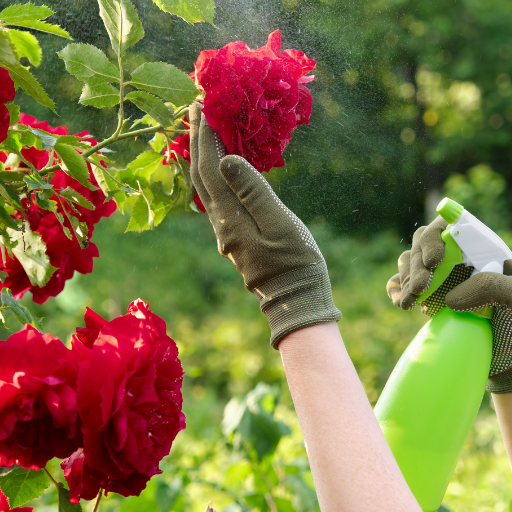
Magnesium-deficient plants, especially those with a magnesium deficit or deficiency, such as tomatoes for example, have been enhanced by Epsom salts which are used to assist in correcting such shortages that normally manifest through yellowing of the leaves. In particular, roses benefit extensively when they are applied on because of magnesium support to the color strength and growth of blooms. Besides that, Epsom salt is also good for peppers both hot and sweet where it increases fruit setting and vitality of the whole plant. Gardening Know How, The Spruce, Better Homes & Gardens are some of the reputable gardening sources from where research shows regular application can improve plant health and yields in these species.
Flowering Plants and Increased Bloom Production
Roses
Magnesium plays an important role in photosynthesis and pigment synthesis, thereby increasing bloom colouration. According to statistics from the American Rose Society, applying Epsom salts caused larger blooms with more colours. Usually, it is suggested to mix 1 tablespoon per gallon of water with the soil directly once a month.
Azaleas
Since azaleas have bright, beautiful flowers that bloom continuously, they require magnesium for nutrient absorption and general plant system functioning. Studies from Clemson Cooperative Extension agency have shown that Epsom salt could improve azaleas’ health and blooming capacity. These usually involve sprinkling around a tablespoonful at the base and watering it down thoroughly.
Petunias
Petunias need more magnesium During their flowering period than other times of their life. The article titled “Use Magnesium Sulfate (Epsom Salt) On Plants” explains how spraying Epsom salt high or yellowing leaves will keep them green while encouraging more blossoms. For this reason, experts usually recommend adding 1 teaspoonful per one gallon after every two weeks during optimal bloom performance.
Camellias
Moreover camellias blossom well when provided with some magnesium to bloom longer and produce more buds. To increase flower production and vitality, the University of California Agriculture and Natural Resources suggests applying a tablespoon of Epsom salt in one gallon of water four times a year.
Hydrangeas
Magnesium is necessary for hydrangeas since it maintains green colouration in leaves and helps flowers develop. According to the Hydrangea Society regular use of Epsom salt can lead to increased numbers of blooms that last longer. Applying rate follows 1 tablespoon per plant/ every two weeks during growing season.
Marigolds
When Epson salt provides extra magnesium, marigold stems become sturdier, resulting in better blooming plants. For vibrant and abundant blossoms, Gardener’s Path recommends mixing 1 tablespoon per foot of plant height around the base and watering in.
Vegetable Gardens and Enhanced Yield
Epsom salts or Magnesium sulfate is widely used in growing vegetables mainly because these are key elements for crops yielding highly and being healthy at the same time. The Minnesota Department of Agriculture has recommended adding Epsom salts as an additive for magnesium which aids photosynthesis as well as nutrient intake. Additionally, according to Michigan State University Extension, tomatoes and peppers have better fruit development due to increased chlorophyll levels through spraying them with a mixture containing 1 tablespoonful epsom salt dissolved in a gallon of water on each fortnight.
According to research conducted by the Royal Horticultural Society, Epsom salt helps reduce magnesium deficiencies that often present themselves as yellow leaves and stunted growth. It is recommended to apply and distribute one tablespoon of this substance around the base of each plant, then watering it for better access to magnesium. This treatment works well on those vegetables with large leafy foliage such as spinach and broccoli.
Moreover, the studies by Clemson Cooperative Extension show that Epsom salt treatment can uplift germination rates and nutrient intake leading to stronger vegetable plants. A great recommendation is incorporating 1 cup of Epsom salts per 100 square feet at planting time and additional watering with a solution weighing 1 tablespoon for every gallon every fortnight during growing seasons. This ensures technical parameters that yield productivity gains in vegetable gardens within an overall balanced framework.
Potential Risks of Using Epsom Salt on All Plants
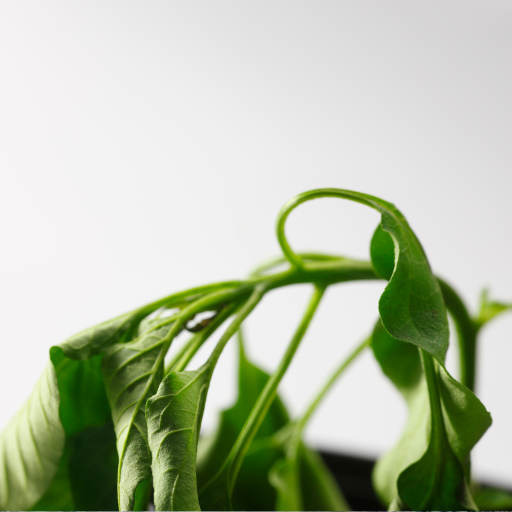
Though Epsom salt is widely spoken of in regards to its benefits for gardening, this practice of using it in all plants may also have some downsides. It means that improper or over-application of Epsom salts can lead to soil salinity, nutritional imbalance, and root injury. According to Gardening Know How, excessive use increases soil toxics affecting the growth and health of plants negatively. As indicated by the University of Minnesota Extension, applying Epsom salt on soils rich in magnesium might result into an oversupply which might limit the uptake of essential minerals such as calcium and potassium among others. For instance, the Old Farmer’s Almanac notes that not all plants respond equally well to Epsom salt; for example, most flowering plants and some shrubs do not show remarkable signs of improvement and may even be stunted if magnesium levels are excessively high. Thusly, carrying out soil tests and determining specific needs of each plant is essential before turning to Epsom salt treatment.
Magnesium Toxicity in Sensitive Species
Managing magnesium toxicity in sensitive species is very important. According to information from the University of Florida IFAS Extension, sensitive species like orchids can be adversely affected by high magnesium levels. Symptoms include leaf chlorosis (yellowing), necrosis (dead tissue) on leaves, and overall reduced vigor.
Some technical parameters that prevent magnesium toxicity are regular soil testing for monitoring Mg throughout growing season before planting begins. Soil magnesium concentrations ranging between 50-120 ppm are considered ideal according to University of Wisconsin-Madison Extension. If a soil test indicates more than this level range it is recommended not adding any kind fertilizer containing Magnesium Sulphate whether it’s Epsom salts or not.
Moreover, Clemson Cooperative Extension recommends having a balanced calcium-magnesium ratio where Ca:Mg should ideally be between 3:1-7:1.To ensure proper nutrition uptake, it is important to maintain the correct balance of nutrients in the soil. High Mg levels can interfere with Ca absorption, which leads to deficiencies and other growth problems. Additionally, gypsum (calcium sulfate) can be used to displace magnesium ions when they are out of balance. By knowing and observing these values, gardeners are able to manage such risks effectively thereby ensuring wellbeing as well as productivity of sensitive plant species.
Soil pH Alterations and Their Effects
An alteration in the soil pH affects nutrient availability and plant health. The ideal soil pH varies depending on the plant species but for most plants; their preference ranges between 6.0-7.0.When soil ph exceeds or falls below this range ,nutrient solubility becomes problematic leading to either deficiency or toxicity .For example, a low soil pH can increase toxic metal solubility like aluminum and manganese whereas a high one makes micronutrients such as iron ,manganese and zinc less available.
Soil pH adjustments require various amendments. Common recommendations for raising soil acidity include liming materials such as calcitic lime (calcium carbonate) or dolomitic lime (calcium magnesium carbonate). Use calcitic lime for calcium deficiencies only while dolomitic lime is more appropriate when both calcium and magnesium are needed
Soil can be acidified by sulfur-based amendments like elemental sulfur and aluminium sulphate to lower the pH. Soil bacteria oxidize elemental sulfur into sulphuric acid over time, ultimately lowering the pH. Aluminium sulphate, on the other hand, is much quicker at acidifying soil, but caution must be exercised given that it introduces aluminium, which can become toxic when its concentration rises above certain levels.
Long-Term Impact on Soil Health
Generally, long term effect of changes in soil pH on soil health is a complicated subject affected by many things such as type and quantity of amendments used, characteristics of the soil or plant species under cultivation. Consistently applying materials for altering pH may result in cumulative modification of the physical properties of soils; microbial biomass; nutrient availability between times of application; and biological processes.
Liming material should also be regularly applied to increase soil pH through promoting clay flocculation thereby enhancing aeration and root penetration. Moreover, an optimal range of p H supports a diverse and active soil microbial community which plays a vital role in organic matter decomposition and nutrient cycling. The liming materials’ effective calcium carbonate equivalent (ECCE) measures their ability to neutralize acidity and should ideally be greater than 90% for effective pH adjustment.
Sulfur based amendments can stimulate the activity of sulfur-oxidizing bacteria when repeatedly applied to decrease soil pH. These bacteria produce sulphuric acid that further acidifies the soil through oxidation reaction. However, this can lead to other problems if not monitored such as aluminium mobilisation or even toxicity due to that element’s excessive presence in case there is no check mechanism left behind when putting down acidic inputs. Acidic inputs are usually determined by using average rates per acre ranging from 200-500 lbs according to moderate ph values based buffering capacity target ph calculations.
On the flip side, repeated applications of S-based amendments that reduce soil pH encourage Sulphur-oxidizing bacteria activity, which produces sulphuric acid, further lowering the soil pH. However, if not monitored, this may also result in aluminum release and potential toxicity. The amount of sulfur applied should be determined by soil buffering capacity and desired pH, typically between 200 and 500 pounds per acre for moderate changes in pH.
Long-term control of pH requires periodic soil testing to monitor pH levels so as to avoid excessive application of amendments detrimental to soil health. Soil p H meters or laboratory analysis should be used annually to test the soil p H and determine any corrective measures based on current field conditions and crop requirements aimed at maintaining healthy soils for productive agriculture
Specific Plants Adversely Affected by Epsom Salt
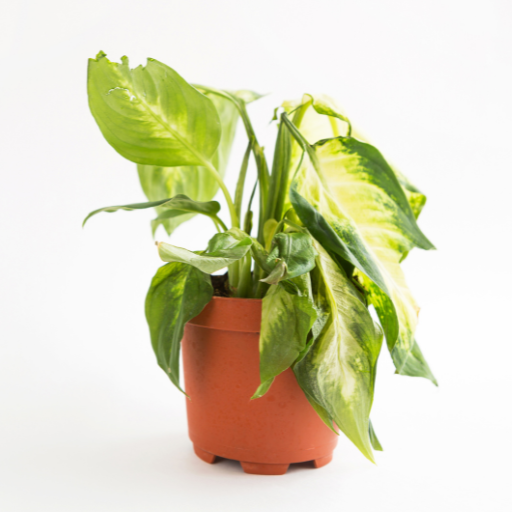
Some plants do not respond well to excess magnesium, such as tomato plants which may show leaf scorch and blossom-end rot through high levels of magnesium causing nutrient imbalances. Other plants like roses can see salt accumulation in the soil hindering nutrient uptake that can cause damages on the roots. Also Japanese maples may suffer from inappropriate application of Epsom salt resulting in necrotic leaves and stunted growth due to magnesium toxicity. Therefore, there is a need for careful monitoring to prevent these effects.
Indoor Houseplants Sensitive to Magnesium
Examples of indoor houseplants that are sensitive to magnesium include spider plants (Chlorophytum comosum), peace lilies (Spathiphyllum), and snake plants (Sansevieria trifasciata). These types of flora show negative signs when exposed to too much magnesium leading to yellowing leaves, marginal browning as well as other nutrient disorders.
- Spider Plants (Chlorophytum comosum): Spider plants can develop tip burn and brown leaf tips when exposed to high magnesium. This is because they are less tolerable to nutrient overload, which interferes with calcium absorption, among other elements vital for their growth.
- Peace Lilies (Spathiphyllum): Peace lilies are particularly sensitive to magnesium sulfate as they prefer a more balanced nutrient environment. Under extreme conditions of excessive magnesium, leaves will become yellow, while roots might be affected by low levels of calcium, which are also antagonized by high concentrations of Mg2+.
- Snake Plants (Sansevieria trifasciata): Snake plants can suffer from a condition known as ‘magnesium toxicity,’ in which their leaves start wilting and turning brown. With an increased quantity of Mg2+ in the media, higher potassium uptake will be compromised, leaving snake plants starved and unable to grow properly.
Certain Garden Vegetables and Excessive Sulfates
Certain garden vegetables such as tomatoes, peppers, and carrots can be adversely affected by excessive sulfates, leading to various issues including nutrient imbalances, soil acidification, and inhibited growth. High levels of sulfate in the soil can lower the pH, making it unfavorable for vegetable growth. In tomatoes, this imbalance can manifest as blossom end rot due to disrupted calcium uptake. Peppers may exhibit symptoms such as leaf chlorosis and reduced fruit size. Conversely, carrots can experience root deformities and reduced flavor quality when exposed to elevated sulfate concentrations. To prevent adverse effects caused by high sulfate levels careful monitoring is necessary with soil samples taken regularly for analysis.
Guidelines for Safe Epsom Salt Usage in Gardening
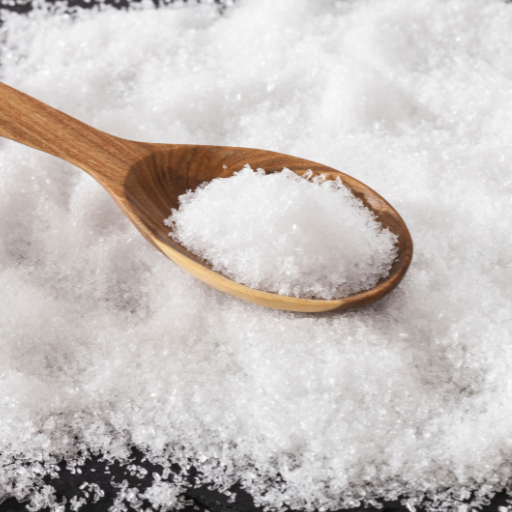
For secure use of Epsom salt (magnesium sulfate) in the garden, several guidelines need to be followed. First of all, a soil test must be conducted before any application to establish the existing magnesium levels since excessive magnesium may cause nutrient imbalance and acidification of the soil. Avoid excessively using Epsom salts, which should usually not exceed 1 tablespoon for every gallon of water during foliar or soil drenching; apply it just once in a month. The Epsom salt dosage can also be modified depending on plants’ health conditions. Furthermore, avoid using it on magnesium sensitive plants such as orchids and some vegetables crops. It is always necessary to consider each plant species’ unique nutritional requirements so as not to harm their growth and development.
Recommended Dosages for Different Plant Types
- Tomatoes: Dissolve one tablespoon of Epsom salt in one gallon of water and administer as a foliar spray every two weeks to encourage optimal tomato growth and fruiting. This will prevent symptoms such as yellowing leaves and poor fruit set due to insufficient magnesium.
- Peppers: Also like tomatoes, peppers require one tablespoon per gallon every two weeks for foliar spraying. This helps increase the size of fruits while also preventing chlorosis thus improving overall plant energy.
- Roses: To gain maximum blooms and foliage health from roses, slightly more Epsom salt is required than other flowers. In early spring, when new cane growth begins, and also during flowering time, half cupfuls of this product are put at the base of the topsoil around each rose bush, thereby enhancing flowering rates.
- Houseplants: For houseplants, you should use a weaker solution; therefore dissolve two tablespoons in one gallon before applying once monthly through leaves only giving them green lushness combined with essential nutrients keeping mal-nutrition at bay.
- Lawns: Finally, Epsom salt can be spread at a rate of 3 pounds per 1,250 square feet using a spreader to achieve the most beautiful lawn ever. This is done in both spring and fall seasons to ensure magnesium levels are supplied to the grass and increase its ability to resist attacks or diseases.
- Garden Vegetables: Mix one tablespoon of Epsom salt with one gallon of water then apply it as soil drenching once per month on different garden vegetables. The essential magnesium content ensures that nutrients are absorbed efficiently into plants’ tissues thereby enhancing their overall health status.
Best Practices for Soil Testing and Adjustment
Soil testing is an important step in optimizing plant health and productivity. First, collect representative soil samples from various zones within the gardening space for accurate analysis. Samples should be taken uniformly across different sections at an average depth of about 6-8 inches, thereafter mixing them together as a composite sample. Finally send this composite sample to a reputable soil testing laboratory where comprehensive tests will be carried out including determining the pH value, nutrient levels as well as organic matter content analysis.
Soil adjustments can be performed based on test outcomes. For instance, when soil is too acidic (the pH is very low), we can add things like agricultural lime or dolomitic lime to raise the level of the soil pH. Similarly, if the soil pH is too high, some additives such as peat moss and sulfur could be used to lower it. The information given in the soil examination findings will guide us on which specific fertilizers are required for adding nutrients that are deficient in the soil. Nutrient imbalances and toxicities will result if these recommendations are not followed precisely.
It is recommended that regular soil testing be done every 2-3 years to assess soil health and adjust accordingly. By ensuring a balanced pH level and sufficient availability of nutrients, plants will grow optimally and improve their productivity resulting in healthier gardens.
Frequency of Application for Optimal Results
To achieve optimal plant productivity and healthy soils, accurate application times should be followed while applying amendments. In most cases however, pH adjustment by applying lime or sulphur should take place during off season or throughout fall so that there is enough time for them to react with the soils. Lime application varies depending on rainfall patterns and types of soils; generally it should take place after intervals of 3-4 years. Sulfur applications must be carefully done normally at 2-3 year interval only as guided by respective quantities from a soil test.
Fertilizer applications vary according to plant type thus frequency differs as well. An evenly spread fertilizer should be applied around vegetables and annuals when planting them initially and then subsequently after each 6 weeks during growing season for example through April up until November approximately once every four weeks Perennials may need just one application every year or two years depending on how fast they are growing and what they need nutrient wise, while trees may require an additional feeding once a year or once in two years. Do not over apply fertilizer of any kind or the risk that it leaches out through the soil could be high. Observe application rates and recommendations for the given type of fertilizer in order to avoid overuse and possible loss of nutrients.
Organic matter such as compost ought to be mixed into the dirt at least once a year, preferably during soil preparation for planting. Incorporating compost into the topsoil by applying a 1-2 inch layer and working it in well will enhance soil structure and ensure continued release of nutrients.
Keeping these application frequencies not only maintains optimum conditions for soils but contributes to long term healthiness and productivity within your garden.
Frequently Asked Questions (FAQs)
Q: Can I use Epsom salt on all plants?
A: While many garden plants can benefit from Epsom salt, not all plants respond well to it. Plants like tomatoes, peppers, and roses often benefit from the magnesium and sulfate in Epsom salt, but it’s important to be cautious with the amount applied. Some plants don’t like Epsom salt, especially in concentrated amounts.
Q: What does Epsom salt do for plants?
A: Epsom salt for plants provides magnesium, which is crucial for photosynthesis and the production of chlorophyll. This can help plants grow bushier, produce more flowers, and improve nutrient uptake. It is also known to help certain garden plants such as tomatoes and roses thrive.
Q: How much Epsom salt should I use for plants?
A: The general recommendation is to use two tablespoons of Epsom salt per gallon of water for most garden plants. It’s essential to avoid overuse, as too much Epsom salt can lead to an imbalance in soil nutrients.
Q: Can Epsom salt help prevent blossom end rot in tomatoes and peppers?
A: Epsom salt can help prevent blossom end rot by supplying magnesium, but it is not a complete solution. Blossom end rot is typically caused by a calcium deficiency, so it’s important to ensure your soil has sufficient calcium alongside using Epsom salt.
Q: Is Epsom salt safe for potted plants?
A: Yes, Epsom salt can be used for potted plants. However, be mindful of the amount used, as potted plants are in a contained environment and excessive salt can accumulate and harm the plants. A diluted solution is recommended for indoor plants.
Q: How often should I apply Epsom salt to my garden plants?
A: It is generally advisable to apply Epsom salt to garden plants about once a month. For continuous use, integrating Epsom salt into your regular fertilization routine in appropriate amounts can help maintain healthy growth.
Q: Can Epsom salt kill plants if used incorrectly?
A: Yes, using too much Epsom salt can harm or even kill plants. Overuse can lead to an accumulation of magnesium sulfate in the soil, which may disrupt nutrient balance and negatively affect plant growth.
Q: Are there any plants that don’t benefit from Epsom salt?
A: Yes, some plants may not benefit from Epsom salt and could be negatively affected by it. Generally, plants that do not require much magnesium, such as certain leafy greens and roots, might not need it. Always research specific plant needs before applying Epsom salt.
Q: How do I apply Epsom salt in the garden?
A: To apply Epsom salt in the garden, dissolve the recommended amount (typically two tablespoons per gallon) in water and use it to water your plants. Alternatively, you can sprinkle Epsom salt directly around the base of the plants and water thoroughly afterward.
Q: What are the benefits of using Epsom salt in the garden?
A: Using Epsom salt in the garden can promote stronger growth and increased yield, particularly in plants like tomatoes, peppers, and roses. Epsom salt can improve nutrient uptake, support healthy leaf development, and even aid in preventing certain deficiencies, making it a valuable addition to many gardeners’ practices.






